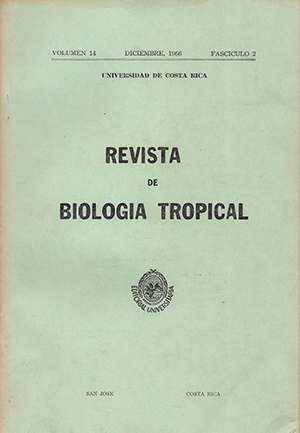Abstract
Growth characteristics of a Costa Rican strain of Leishmania braziliensis (O-CR) are described, in a diphasic medium and under diverse conditions. The maximum number of leptomonads was obtained on the 5th or 6th day, there being no relation between this number and the size of the inoculum. The latter, whether in growth or deeline phase, gave similar growth curves; the lag phase, however, was influenced by the phase and quantity of the inoculum. Cultures in exponential or decliniog phases diluted 1:10 gave lower curves than the same undiluted cultures.
Circular shaking of the cultures gave better growth, aod erlenmeyer flasks proved better than vertical tubes with the same amount of medium. A temperature of 26.5°C was better than room temperature or 29° C. At 31°C and 31°C the flagellate failed to grow. bifferent concentrations of rabbit blood added to the medium catlsed no difference in the results. Rabbit and guinea pig blood proved better than chicken or human blood. Hemolysed blood inhibited growth slightly, and blood aged for a month in the refrigerator, or media previously aged up to 2 mooths, showed no alteration of capacity. Media prepared with aged serum and hematin, however, did lose their potency, slowly al freezing temperature and more rapidly under refrigeration or at room temperature. The flagellate proved unable to grow in fresh rabbit hemoglobin free serum, growth being restored by the addition of hematin or hematoporphyrin. Absorption of CO2 from thc air resulted io a decrease of 25 to 50% in the number of leptomonads.






